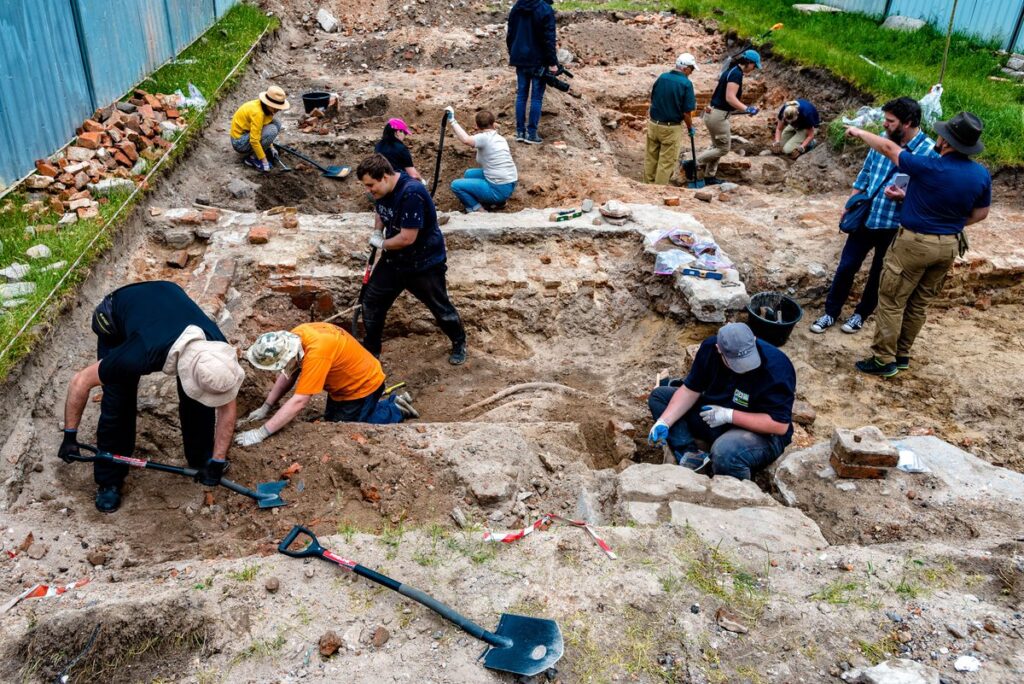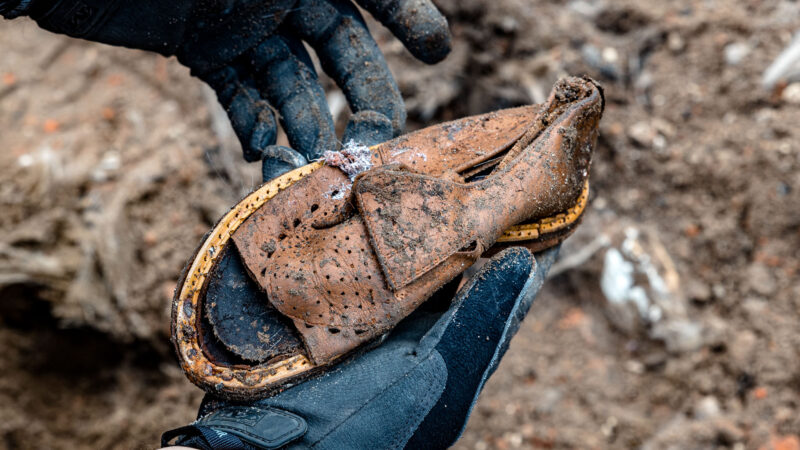Investigations Continue at Warsaw’s World War II Jewish Ghetto
Archaeological excavations in the former Warsaw ghetto – at a site where the Jewish underground resistance was based – have unearthed items including children’s shoes and pages from books in Hebrew and Polish.
The excavations, which began in early June and are scheduled to continue until the end of July, are being coordinated by Christopher Newport University and Vistula University together with the Warsaw Ghetto Museum.
They are centred on the Miła, Dubois, Niska and Karmelicka streets in the Muranów district of Warsaw around a memorial mound named after Mordechai Anielewicz.

He was head of the Jewish Combat Organization (ŻOB), which was based at 18 Miła Street, and was among those thought to have died there in May 1943, during the ghetto uprising that had begun the previous month.
“This is a unique place because of the history that played out here in 1943,” Jacek Konik, an archaeologist and historian from the Warsaw Ghetto Museum who is leading the excavations, told TVN24.
“It was here that the soldiers of the Jewish Combat Organisation, surrounded by the Germans, probably committed mass suicide. Only a small group of people survived,” Konik explained. The archaeologists hope to learn about how people lived in the ghetto through the artefacts they find.

A shoe found at the site probably belonged to a Jewish child aged around 10, although nothing is known about its owner.
It is “a symbol of this place and the entire tragedy that took place here – both in the Warsaw ghetto in 1943 and later in 1944 in the whole of Warsaw [during the Warsaw Uprising]…a symbol of all the children whom somebody did not allow to grow up”, said Konik.
The brown leather slipper, made of cheap material, was found early on in the excavations An even smaller shoe was later discovered, reports Gazeta Wyborcza. They have been sent for conservation.
Among the other items the team have found are written accounts of the events that took place on the site, the remains of a burnt book collection, tableware, and ceramic tiles.
The archaeologists have managed to preserve pages from some books – “after the charred pages came into contact with the air, letters appeared” – including texts in Hebrew – probably passages from the Talmud – as well as a Jewish prayer book and an as-yet-unidentified Polish novel.
They are also investigating the possible size of a hidden shelter stretching under a number of townhouses and with six entrances. The team have managed to excavate down to the level of the floor of the cellars, which is where they have found the artefacts.
Konik said that any volunteers “interested in research and…who would like to help to regain and restore memory” are welcome to join the excavations by emailing jkonik@1943.pl or b.jozefow-czerwinska@vistula.edu.pl.
“We treat it as a kind of social obligation for as many people as possible who perhaps are not necessarily professional archaeologists to see and understand what type of history we are dealing with…history that affects us directly,” Konik added.
Warsaw’s ghetto was the largest of all those established by Nazi Germany during the Second World War. At one point it held around 460,000 Jews captive in an area of 3.4 square km (1.3 square miles).
The vast majority of those victims died in the gas chambers of Treblinka and Majdanek following deportation from the ghetto. In April 1943, the ghetto uprising – the largest single act of Jewish resistance during the war – temporarily halted the deportations.
The uprising was brutally suppressed by the German occupiers, with tens of thousands of Jews killed in the ghetto or after capture and deportation to extermination camps.





